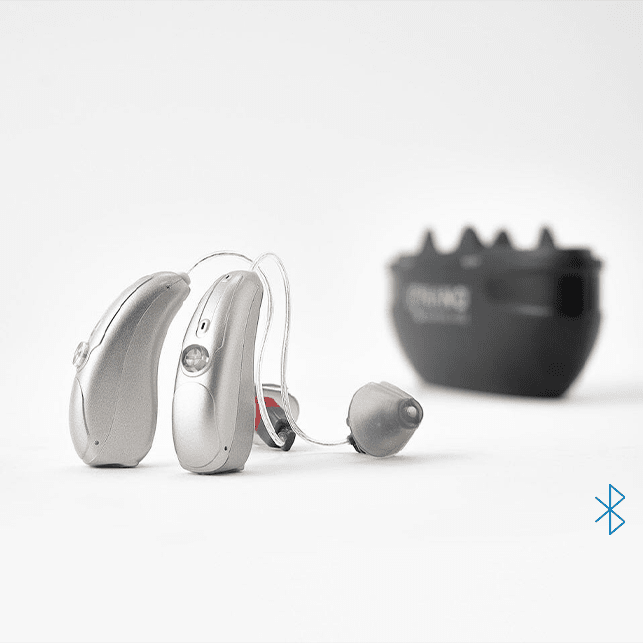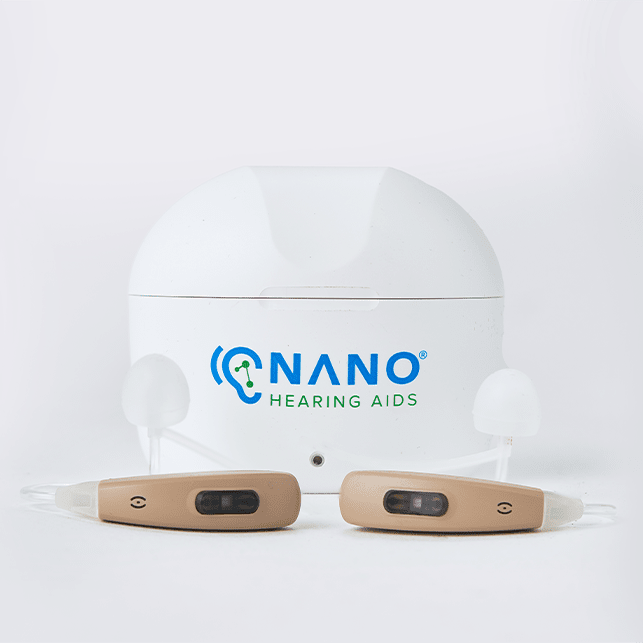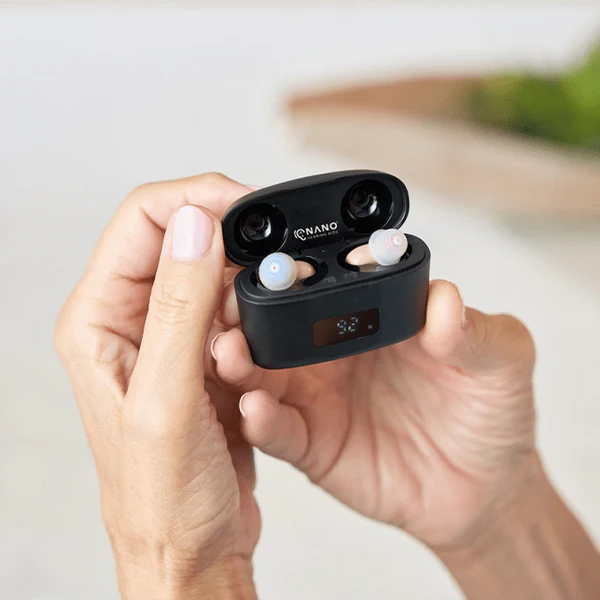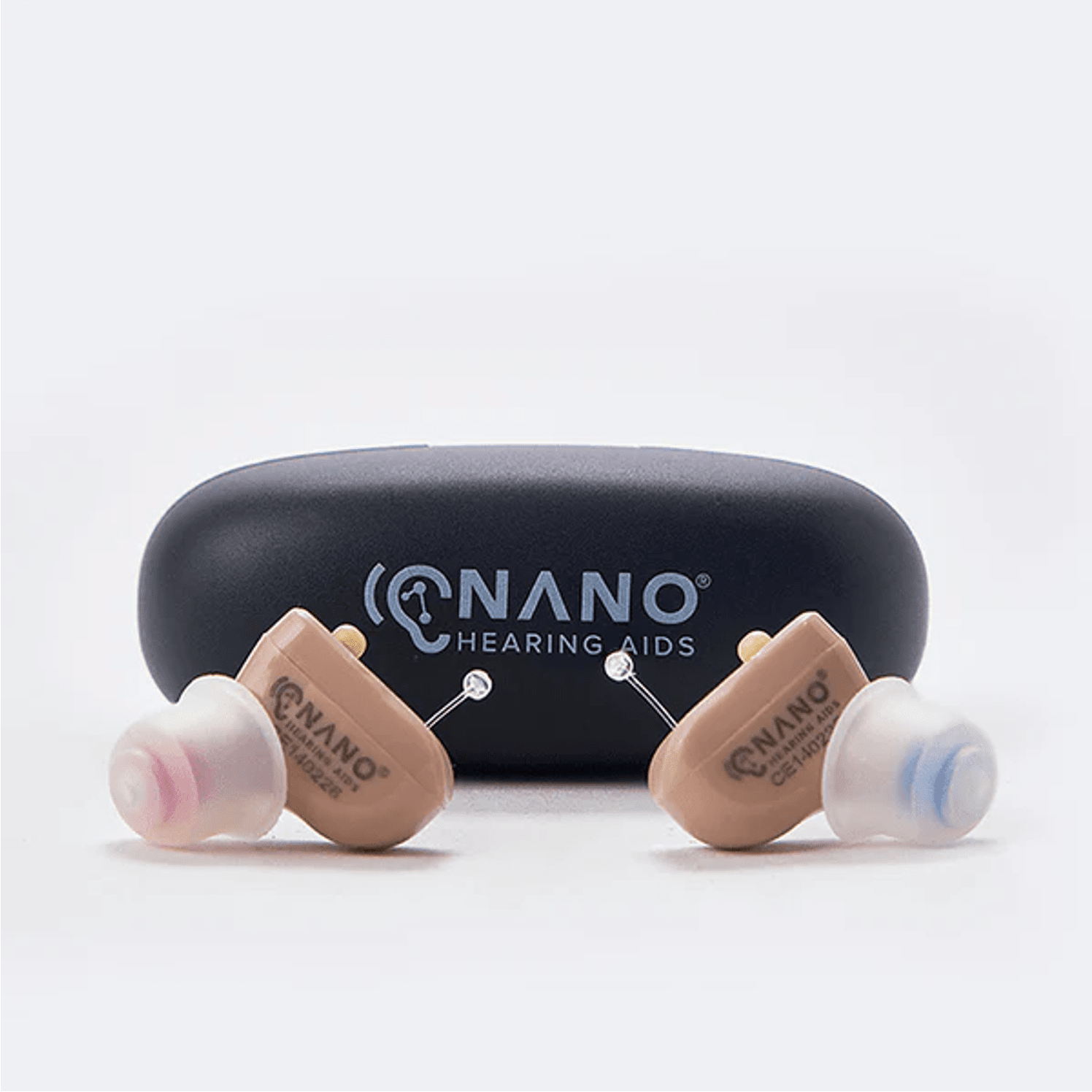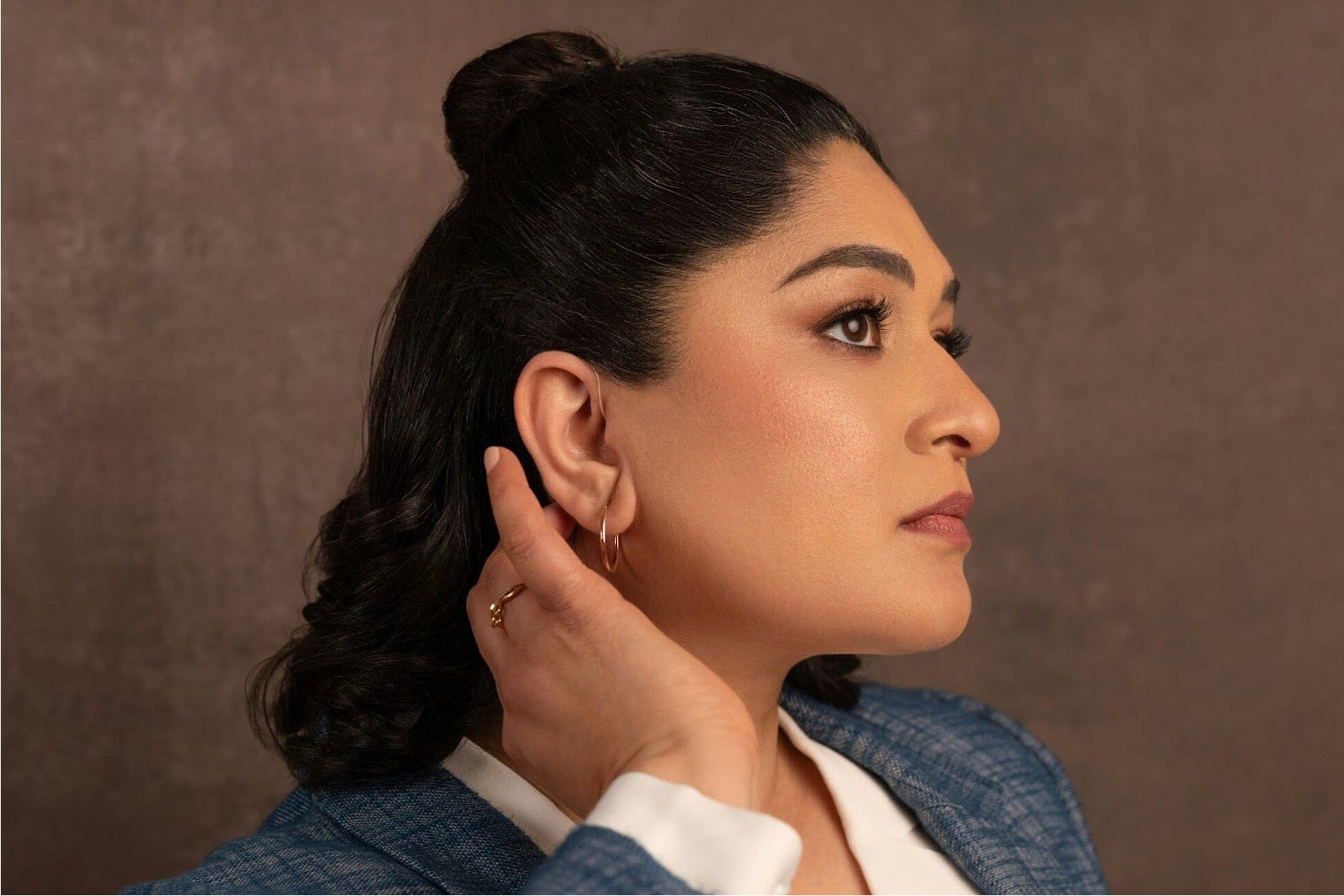Key Takeaways
- Disposable batteries need replacing every 10-16 days, while rechargeable batteries can last up to 24 hours on a single charge.
- Rechargeable hearing aids are more environmentally friendly.
- Battery-operated hearing aids are often cheaper initially but can be more expensive in the long run due to frequent battery replacements.
- Rechargeable hearing aids are more convenient for users with dexterity issues.
- Our First Ear Pro CIC provides up to 26 hours of listening time per charge, and the charging case offers up to 3 full charges.
Nano Hearing Aids are FDA-registered, Class I devices. These OTC hearing aids are designed for individuals over 18 years of age with perceived mild to moderate hearing impairment. Nano won the Top ENT Solution Provider 2023, has 24/7 customer care, and has an affordable price compared to others.
Battery Operated Hearing Aids Explained
Battery-operated hearing aids use disposable zinc-air batteries. Removing a tab from the battery starts the activation process, providing power for 10-16 days.
Pros of Battery Operated Hearing Aids
- Often less expensive upfront compared to rechargeable models.
- Easy to carry spare batteries.
Cons of Battery Operated Hearing Aids
- Frequent battery replacements can become costly over time.
- Replacing batteries can be challenging for individuals with dexterity issues.
- Used batteries contribute to environmental waste.
Rechargeable Hearing Aids Explained
Rechargeable hearing aids are increasingly popular for their convenience and eco-friendliness. These devices feature built-in lithium-ion or silver-zinc batteries that can be easily recharged using a charging station or USB cable. A single charge typically provides up to 24 hours of use.
Pros of Rechargeable Hearing Aids
- Eliminates the need for frequent battery changes.
- Reduces battery waste and environmental impact.
- Easier to use—especially for people with dexterity issues.
Cons of Rechargeable Hearing Aids
- More expensive than battery-operated models.
- Built-in batteries may need replacements after a few years.
Rechargeable hearing aids simplify your routine—no need to frequently change batteries.
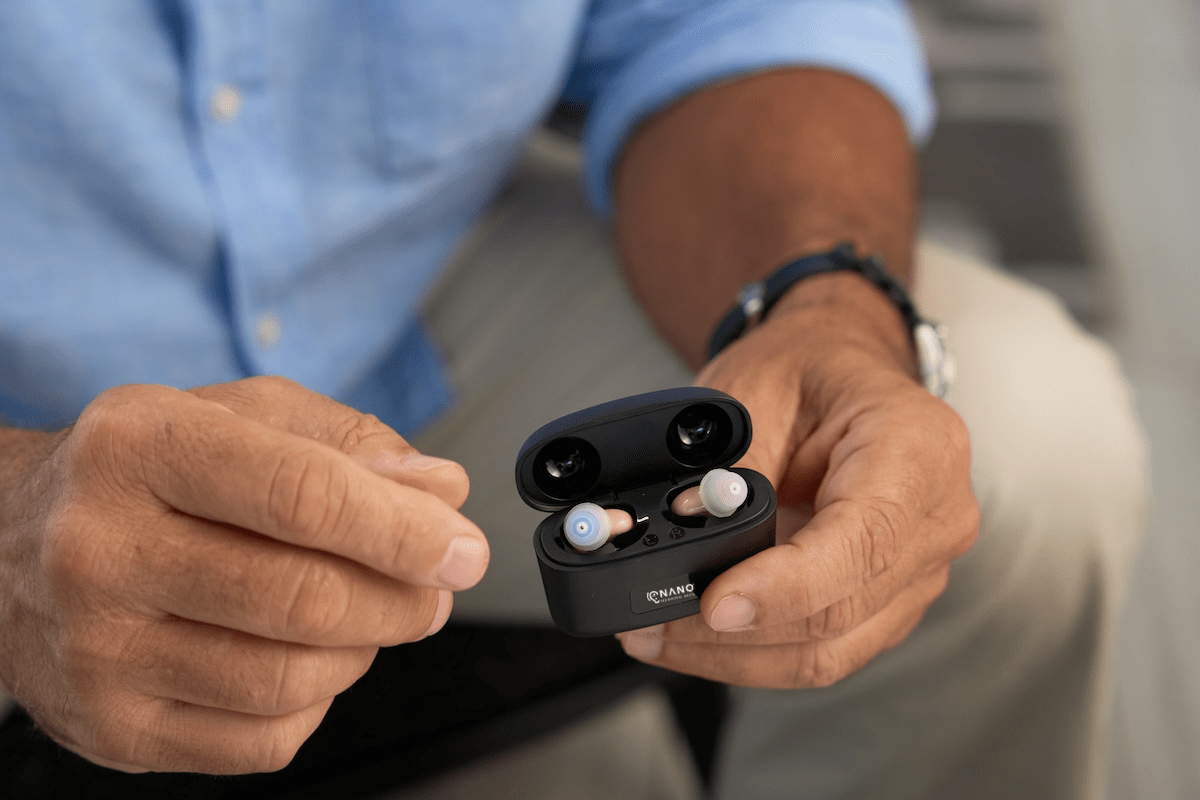
Cost Considerations and Long-Term Value
- Rechargeable hearing aids generally have a higher initial cost due to advanced technology and built-in batteries, but they offer long-term savings and convenience.
- Battery-operated hearing aids are typically less expensive upfront, but the cost of disposable batteries adds up over time.
Choosing the Right Option
- Assess Your Lifestyle Needs: If you lead a busy life and prefer convenience, rechargeable hearing aids offer ease of use and reduce the hassle of frequent battery changes.
- Dexterity and Handling: Rechargeable hearing aids are more manageable for individuals with dexterity issues. The small size of disposable batteries can be challenging to handle, especially for those with arthritis or other conditions affecting fine motor skills.
- Environmental Impact: Rechargeable hearing aids are the more sustainable option, reducing battery waste, and they’re often made with recyclable materials.
How Nano Hearing Aids Can Help
Maximize your hearing experience with rechargeable Nano hearing aids.
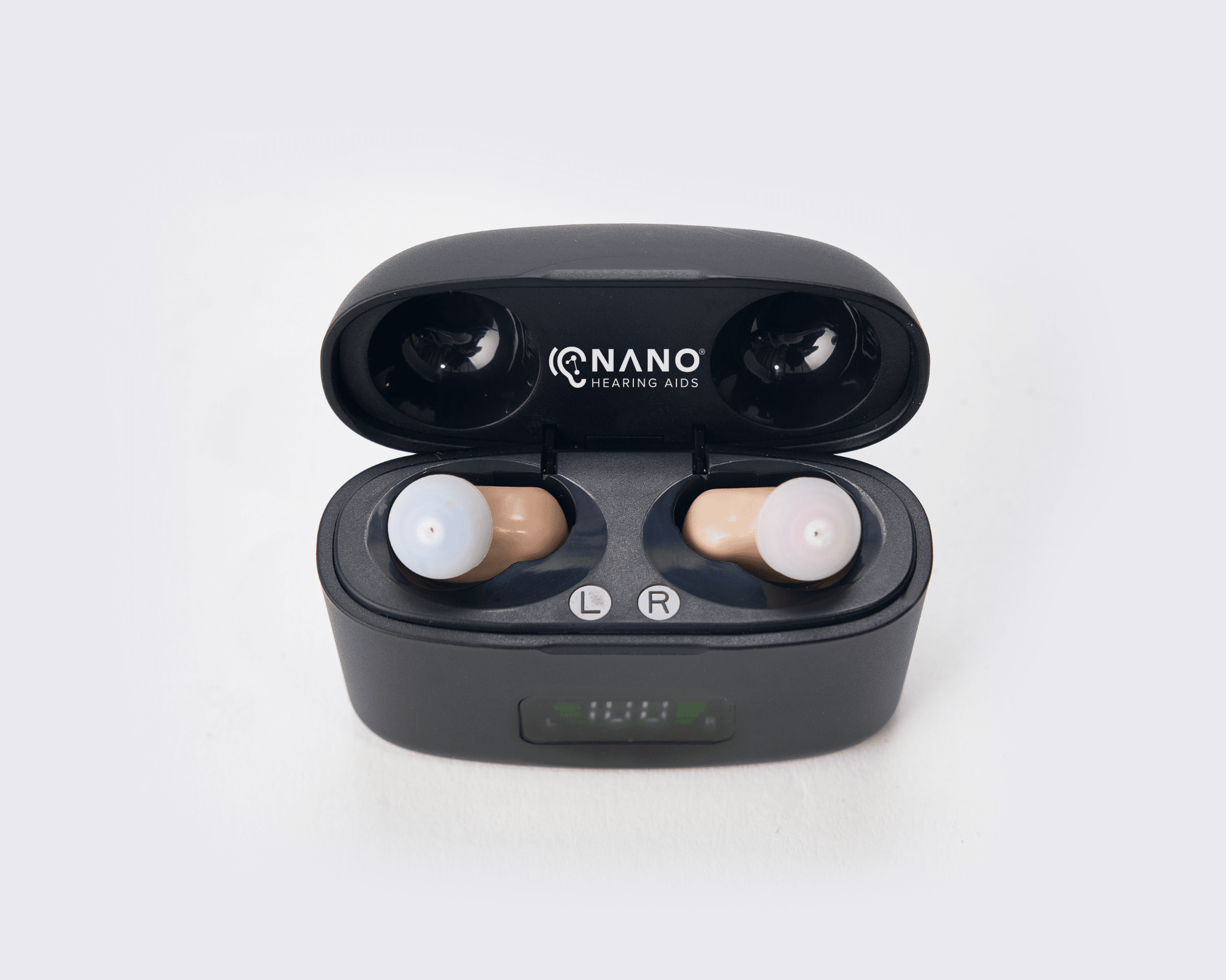
At Nano Hearing Aids, we've been providing high-quality hearing solutions for over seven years, offering a variety of rechargeable models—from behind-the-ear (BTE) and completely-in-canal (CIC) to our new receiver-in-canal (RIC) and in-the-ear (ITC) hearing aids.
Our model, First Ear Pro CIC, comes with a small portable charging case that allows up to three full charges, giving you up to 26 hours of listening time with each charge.
Frequently Asked Questions
How often do I need to change disposable hearing aid batteries?
The frequency for changing disposable hearing aid batteries can indeed vary. Typically:
- Smaller batteries (like size 10 or 312) tend to last about 5-7 days.
- Larger batteries (like size 13 or 675) generally last between 10-16 days, depending on factors like hearing aid features, daily usage, and streaming activity.
Are rechargeable hearing aids more expensive upfront?
Yes, rechargeable hearing aids are generally more expensive upfront due to advanced technology and built-in rechargeable batteries. However, they can be more cost-effective in the long run, as you won't need to purchase disposable batteries frequently.
What is the average lifespan of rechargeable hearing aid batteries?
Rechargeable hearing aid batteries typically last around 3-5 years. After this period, the batteries may need to be replaced by a professional.
Can I switch from battery operated to rechargeable hearing aids?
Yes, you can.
Which type of hearing aid is better for someone with dexterity issues?
Rechargeable hearing aids are generally better for individuals with dexterity issues as you don’t need to deal with battery replacements frequently.
How do I know when to recharge my hearing aid?
Most rechargeable hearing aids have battery level indicators and alerts.
What should I do if my rechargeable hearing aid stops holding a charge?
Ensure the hearing aid is correctly placed in the charging station and that the power source is functioning properly. If the issue persists, contact your hearing aid provider or audiologist—the battery may need to be replaced.
Why should I choose Nano OTC Hearing Aids?
At Nano Hearing Aids, we offer FDA-registered, Class I OTC devices, like our First Ear Pro CIC. These hearing aids are rechargeable, offering up to 26 hours of listening time per charge. They also come with a portable charging case for up to three full charges.

